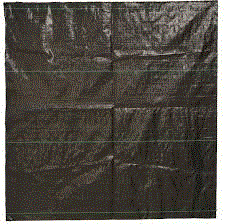top of page

Tree Program




The Lincoln SWCD offers trees, shrubs, conifers and matting material available for conservation purposes. Trees can be ordered throughout the year however most orders are placed over the winter. The District also provides technical/planning, planting assistance on larger orders for trees bought through the District. If you have questions about our tree program, species or availability please contact the Lincoln SWCD.
Click on the links below to view images of some of the trees we offer through our tree program!
Arborvitae, American
Arborvitae, Techny
Cedar, Eastern Red
Cherry, Nanking
Cherry, Sand
Chokeberry, Black
Chokecherry, Common
Cottonwood, Male
Crabapple, Red Splendor
Cranberry Bush
Dogwood, Redosier
Elm, New Harmony
Elm, Princeton
Elm, Valley Forge
Fir, Balsam
Hackberry
Honeylocust, Thornless
Lilac, Common Purple
Linden, American
Linden, Little Leaf
Maple, Amur
Serviceberry (Juneberry)
Spruce, Black Hills
Spruce, Meyer
Sumac, Smooth
Walnut, Black
Willow, Golden
Willow, Hybrid
Plantskydd Repellent
Long lasting, year round protection for your garden & landscape. Proven effective for up to 6 months. Effective on deer, rabbits, voles, elk, moose chipmunks and squirrels. Treat plants by spraying or dipping them in the solution. Needles and leaves may temporarily darken but color will return in 18-36 hours. Rain resistant, no need to re-apply after every rainfall. Safe for use in vegetable gardens, on fruit trees and food crops. Apply to plants above freezing temperature. Plantskydd repels by emitting an odor that animals associate with predator activity. Animals avoid the plants because of the smell.
Call for pricing.


Tubex Tree Shelter
Tubex Tree Shelters are an important tool when attempting to establish difficult to grow tree seedlings on challenging sites. Tubex tree shelters protect plants from browsing animals and have been specially designed to provide the right solution to your planting needs. These tree shelters provide a tree seedling with 5—7 years of durability and protection.
Call for pricing.


Tree Matting
The primary reason for early shelterbelt or windbreak failures is the lack of weed control, which results in poor growth and dead trees. Weed control should begin the year prior to planting and continue until the lower branches of the trees close in and shade out weeds and grasses. Good weed control involves a combination of good matting and regular maintenance.
Call for pricing.
The fabric resists tearing, puncturing and weed penetration while allowing air and water to get to the tree roots. When the fabric is used properly, it prevents weeds from growing around the trees. By reducing weed competition, you may see better growth rates and tree survivability. Using the matting also reduces the need for mowing, tilling and pulling weeds by hand.


bottom of page
